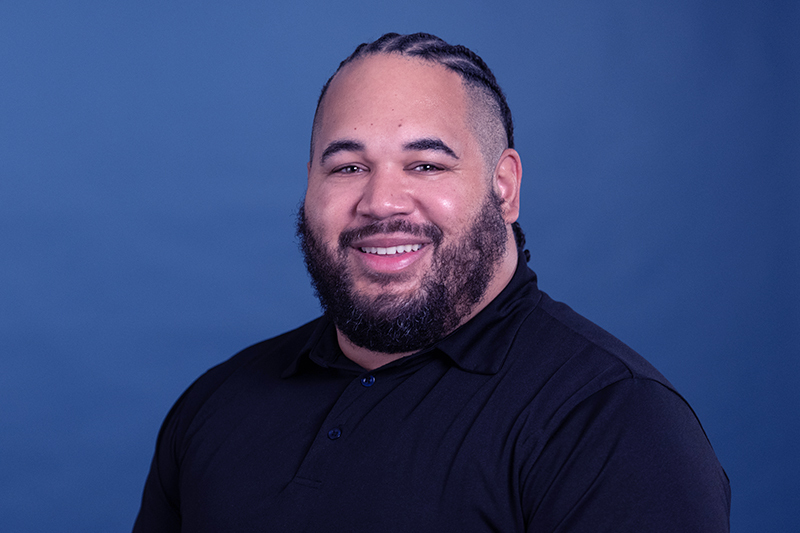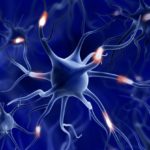Perfecting the craft of modeling disease in stem cells: Dosh Whye

Part of an ongoing series profiling researchers at Boston Children’s Hospital.
Dosh Whye has always wanted to make peoples’ lives better, but he never imagined that tending to stem cells in a lab seven days a week would be the way he would do it. Now, as an assistant director of the Human Neuron Core in the Rosamund Stone Zander Translational Neuroscience Center at Boston Children’s, Whye uses human stem cells to develop new models of neurological conditions that help researchers work towards treatments.
“I want to have an impact on peoples’ lives, and I think contributing to research that supports human health and disease has a lot of benefit,” explains Whye.
Whye wanted to be a medical doctor when he first got to college, but after getting a taste for research, he dove into lab work and never left. After graduating from Boston College, where he played football with Atlanta Falcons legend Matt Ryan, he worked at a children’s hospital and used stem cells to study pediatric neuromuscular disorders.
Since then, Whye has held academic and industry positions using stem cells to investigate possible treatments for Alzheimer’s disease, Parkinson’s disease, amyotrophic lateral sclerosis (ALS), diabetes, and epilepsy.
Creating models of neurologic disorders from stem cells
At Boston Children’s, Whye and his team develop and maintain different types of stem cells. This entails transforming tissue and blood samples from patients and donors into stem cells in a petri dish and applying chemicals to turn the stem cells into nervous system cells. “It’s like being in a kitchen cooking, and trying out different recipes,” says Whye. His work allows researchers to run experiments and test potential treatments on human models of disease. In some cases, nerve cells made from patients’ own tissues are better than traditional mouse models for studying disease.
“Animal models have done a great deal in helping to assist with research developments, but there is still a gap animal models can’t fulfill,” he explains. “Human cellular models can help provide a more accurate system for developing better therapies and improving patient outcomes.”
Though useful for research, stem cells can be quite finicky and require much care and attention to thrive. Even when supplied with the best nutrients, Whye says that stem cells are delicate and require constant maintenance. But he really loves being in the lab. “I want to enhance my skills and perfect my craft, and I want to be at the forefront of the field in creating innovative models of neurological diseases from stem cells,” he says.
A new method for visualizing spinal cord development
Recently, Whye helped colleagues in the F.M. Kirby Neurobiology Center apply for a grant to support the creation of a new model for neural tube defects, like spina bifida, that prevent the neural tube from fully closing to form the spinal cord. Because they occur during embryonic development, they are very difficult to study.
Whye creates a chemical cocktail that drives stem cells to mature and become like the different cell types that make up a neural tube. The result, called an organoid, is a simplified three-dimensional version of the neural tube that researchers can study directly. It is visible to the naked eye, about the size of a pea, and lets researchers look at how different cells work together to form the spinal cord.
Supporting research advancement
Whye enjoys being part of a team where he can work on multiple projects at once in a dynamic and fast-paced environment while advancing neuroscience research. “I find it much more exciting to work across several projects at once, being in a supportive role. I can still have some involvement in the scientific planning, experimental design, and research strategy, without it being my main focus,” he says.
His careful caretaking of stem cells and passion for collaboration provides researchers with new ways of tackling their research questions and testing treatments. “There is so much exciting work going on at Boston Children’s, and we can offer our collaborators a new way to answer their research questions and treat neurological disorders,” says Whye.
Read more profiles of Boston Children’s researchers
Related Posts :
-

Advancing mother-child health globally: Grace Chan MD, MPH, PhD
First in an ongoing series profiling researchers at Boston Children's Hospital. Globally, five million children die annually before the age ...
-

New Human Neuron Core to analyze 'disease in a dish'
Last week was a good week for neuroscience. Boston Children’s Hospital received nearly $2.2 million from the Massachusetts Life Sciences ...
-

Conquering a rare metabolic condition: A family, a pediatrician, and two labs join forces
As a newborn, Sam Hoffman never cried or made a sound. His mother, Carolyn, often had to wake him up ...
-

Taming vaccine data: Joann Arce, PhD
Part of an ongoing series profiling researchers at Boston Children’s Hospital. Joann Arce, PhD, is a data tamer — corralling ...





